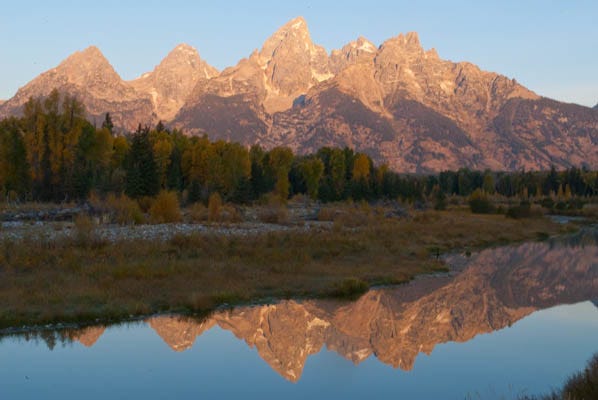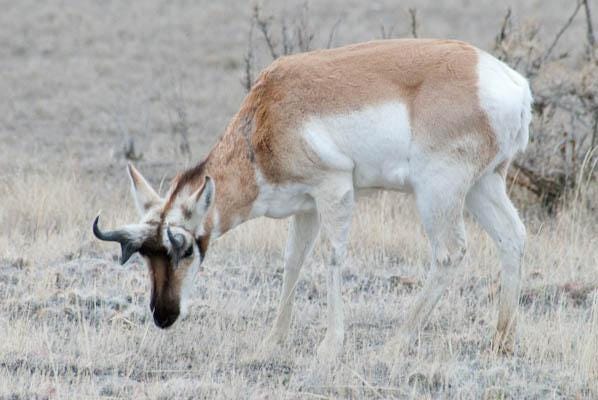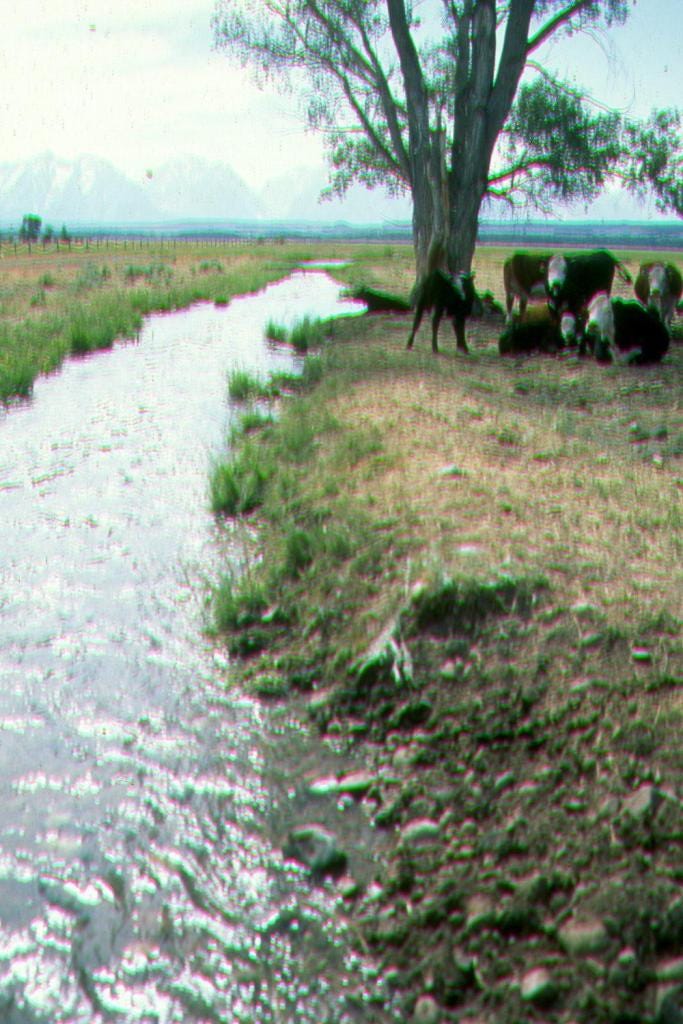Cows in a National Park? How Can That Be?
Cattle grazing, a practice that dates back to the creation of Grand Teton National Park and is also observed in a dozen other parks, is a part of the park’s historical legacy. However, that legacy is still creating conflicts between park values and livestock interests. A current controversy is over a $700,000 fence in the More
The post Cows in a National Park? How Can That Be? appeared first on CounterPunch.org.

Tetons seen along Snake River from Schwabacher Landing Grand Teton National Park, Wyoming. Photo George Wuerthner.
Cattle grazing, a practice that dates back to the creation of Grand Teton National Park and is also observed in a dozen other parks, is a part of the park’s historical legacy.
However, that legacy is still creating conflicts between park values and livestock interests. A current controversy is over a $700,000 fence in the park to separate cattle grazing on an allotment within the park from wildlife.
The fence will interfere with wildlife movement. Fences also sometimes entangle wildlife attempting to jump the barrier.

Pronghorn have died in Wyoming due to disease transmitted from livestock. Photo George Wuerthner.
Another significant concern is the potential threat of disease transfer from livestock to park wildlife. This is not a hypothetical concern. In 2022, the cattle-borne disease Mycoplasma bovis ran through pronghorn in Sublette County, wiping out over half of the herd, including animals that summer in Grand Teton National Park but migrate to the Green River in winter.
The ongoing conflict over livestock production within the park serves as a reminder of the need for change. While the presence of cattle is a legacy of the park’s creation, it’s time to pave the way for a more harmonious and wildlife-friendly park where the needs of wildlife are given priority.
The idea of making the Teton Range part of a national park began as early as the 1920s when Horace Albright, Superintendent of Yellowstone National Park, began to lobby to add the Tetons to the national park system.
Although the Teton Range was part of the public domain and within the Teton National Forest, much of the ranchland in Jackson Hole below the mountains was private ownership and potentially open to development.
While Superintendent of Yellowstone, Albright began to lobby John D. Rockefeller Jr., the son of Standard Oil Company’s founder, to purchase the private ranchlands in Jackson Hole. Inspired by the vision of a national park, Rockefeller created the Snake River Land Co. to buy up property around the Snake River, intending to donate the lands to the federal government to establish a Grand Teton National Park. Eventually, Rockefeller acquired 33,000 acres in the valley and proceeded to lobby for the creation of Grand Teton National Park.
However, local Wyoming residents and politicians opposed the park’s creation as another example of a government “land grab.” Some locals even suggested creating a national park would turn Jackson into a “ghost town.” For those unfamiliar with the current situation, over 10,000 “ghosts” live in Jackson today.
How often have we heard that familiar argument? From establishing national forest reserves in the 1890s to Utah’s Congressional Delegation’s recent opposition over the creation of the Bears Ears and Grand Staircase-Escalante National Monuments-
locals may first oppose parks and monuments but invariably come to be their enthusiastic boosters.
In 1943, President Franklin Roosevelt created the Jackson Hole National Monument so Rockefeller’s land donation could be accepted and incorporated into the new monument. Some Wyoming residents compared the Roosevelt National Monument declaration to Hitler’s land acquisitions in Europe. Congress, led by Wyoming’s representatives, passed legislation to abolish the monument, but Roosevelt vetoed it. In 1950, Grand Teton National Park was established, including the Jackson Hole National Monument lands.

Cattle grazing beneath the Tetons. Photo George Wuerthner.
Circling back to the present-day controversy over cows and the park. The Cockrell family that leases the allotment suggests they need to maintain livestock grazing to make ranch operations profitable. Yet they are multi-millionaires from Texas who could afford to donate the land to the Park or at least remove the cows.
The Cockrell Family originally grazed cattle on a much larger piece of public land that included an allotment in the national park and the Bridger Teton National Forest. However, to reduce conflicts between cattle and predators, the family agreed to give up grazing privileges further north in exchange for using the 690-acre Elk Ranch Flat area, which was part of the land originally purchased by John D. Rockefeller for inclusion in the park.
Critics of the fencing believe it continues livestock operations in the park at the expense of wildlife and ecological function. While keeping cattle and wildlife separate may be a worthy goal, it would not be necessary if livestock operations were removed from the park.
The Cockrell Family has suggested it is not interested in giving up grazing privileges in the park. They have also agreed to test their cattle for disease before they are grazed on parklands.
However, perhaps a better expenditure of funds would be to use the Voluntary Permit Grazing Retirement proposal to compensate the Cockrell family for any monetary losses while eliminating a conflict that will likely continue if livestock operations remain in the park. Alternatively, the Cockrell family could donate their grazing allotment to the park and receive a tax break.
Livestock operations compromise many park values including the use of park water for irrigation on the Elk Ranch Flat lands, not to mention the potential for livestock diseases to harm native wildlife. Maybe it’s time to finish what John D. Rockefeller started and eliminate livestock grazing from Grand Teton National Park.
The post Cows in a National Park? How Can That Be? appeared first on CounterPunch.org.
